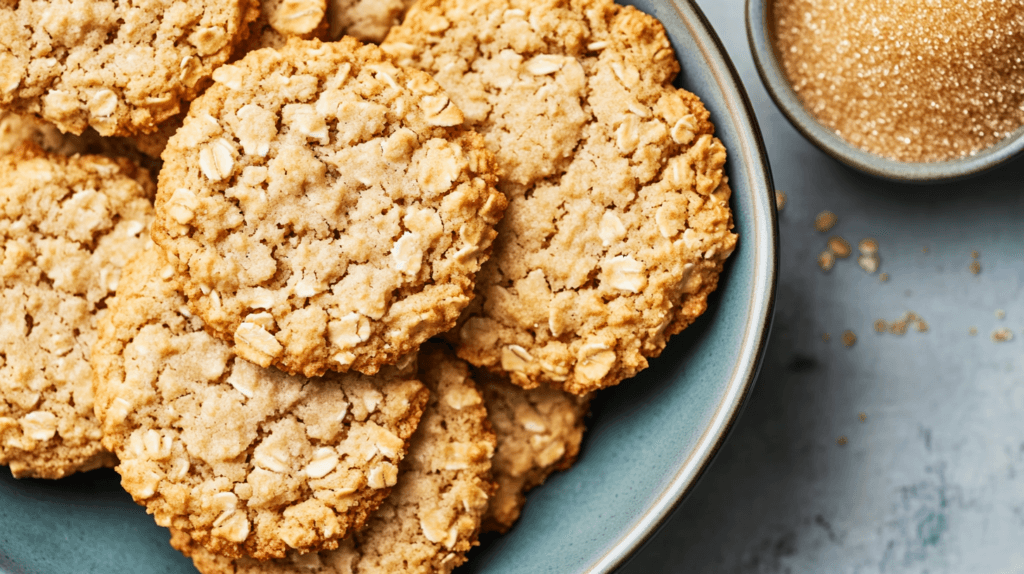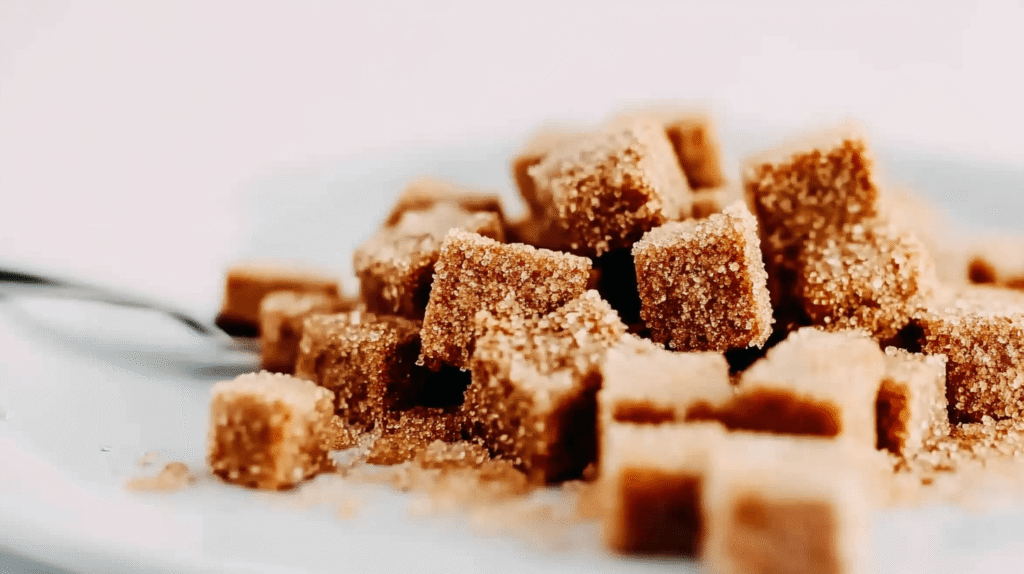Gluten-free diets have become increasingly popular, not just for those with celiac disease but also for individuals with gluten sensitivity or those who choose to avoid gluten for personal health reasons. But when it comes to everyday pantry staples like brown sugar, many people wonder: Is brown sugar gluten-free?
In this article, we’ll explore whether brown sugar contains gluten, the risks of cross-contamination, and how to choose safe options for a gluten-free lifestyle. We’ll also look at some gluten-free alternatives and delicious recipes that make use of brown sugar.
Table of Contents
Understanding Brown Sugar
What Is Brown Sugar?
Brown sugar is a type of sugar that has a rich caramel-like flavor and a moist, soft texture. It gets its color and taste from molasses, which is either naturally retained during processing or added back into refined white sugar.
How Is Brown Sugar Made?
Brown sugar is typically made in one of two ways:
- Natural Brown Sugar: This type retains some of its natural molasses content during the refining process, giving it a darker color and richer taste.
- Refined Brown Sugar: This is made by mixing white sugar with molasses to achieve the desired color and moisture level.
Different Types of Brown Sugar
- Light Brown Sugar: Contains about 3.5% molasses and has a mild flavor.
- Dark Brown Sugar: Contains around 6.5% molasses, making it richer and more intense in taste.
- Raw Sugar (Turbinado or Demerara): Less processed but still has some molasses content.
Since brown sugar is derived from sugarcane or sugar beets, it should naturally be gluten-free. But is that always the case? Let’s find out.
Is Brown Sugar Naturally Gluten-Free?
Does Brown Sugar Contain Gluten?
Pure brown sugar, in its natural form, does not contain gluten. It is made from sugarcane or sugar beets, both of which are naturally gluten-free plants. Since gluten is a protein found in wheat, barley, and rye, it is not present in plain brown sugar.
Natural vs. Processed Brown Sugar
While natural brown sugar is inherently gluten-free, processed brown sugar could have some risks depending on how it is handled during manufacturing. This is where the issue of cross-contamination comes in.
Risk of Cross-Contamination
Even though brown sugar itself does not contain gluten, there is a possibility of cross-contamination during production, packaging, or storage. Here’s how it can happen:
How Gluten Can Get Into Brown Sugar
- Shared Equipment: Some manufacturers process wheat-based products in the same facility as sugar, increasing the risk of gluten particles contaminating the sugar.
- Storage in Bulk Bins: If brown sugar is sold in bulk, it may be scooped with shared utensils that were previously used for gluten-containing products.
- Factories Handling Flour or Grains: If a facility also processes flour, oats, or other gluten-containing products, airborne gluten particles may settle on brown sugar.
Common Processing Risks
- Anti-Caking Agents: Some brown sugar products include additives to prevent clumping. While these agents are usually gluten-free, it’s important to check the ingredients list.
- Blending and Mixing: If brown sugar is blended with other ingredients for flavored or specialty varieties, there is a higher risk of gluten contamination.
Storage and Handling Concerns
Even at home, improper storage can introduce gluten contamination. To ensure your brown sugar stays gluten-free:
- Use a dedicated container that hasn’t been used for wheat-based products.
- Avoid using flour-dusted measuring cups or spoons.
- Buy sealed, certified gluten-free brands to minimize risk.
Certified Gluten-Free Brown Sugar Brands
If you want to be extra cautious, look for brands that carry a “Certified Gluten-Free” label. This ensures that the product has been tested and meets strict gluten-free standards.
What Does “Certified Gluten-Free” Mean?
A gluten-free certification means that the sugar has been tested and contains less than 20 parts per million (ppm) of gluten, the FDA’s standard for gluten-free products. Some brands go even further, ensuring their products have less than 10 ppm or less than 5 ppm of gluten.
Top Gluten-Free Brown Sugar Brands
While most pure brown sugar is safe, here are a few brands that specifically confirm they are gluten-free:
- Domino Brown Sugar – Their products are naturally gluten-free and processed in a facility that does not handle gluten.
- Wholesome Sweeteners – This brand produces organic brown sugar with no cross-contamination risk.
- C&H Brown Sugar – A trusted option, labeled as gluten-free.
- 365 by Whole Foods Market – Certified gluten-free and organic.
- Now Foods Organic Brown Sugar – Free from gluten and additives.
To ensure safety, always check packaging for the latest gluten-free certifications.
How to Choose Safe Brown Sugar
If you follow a strict gluten-free diet, selecting safe brown sugar is essential. Here’s how to make sure your brown sugar is truly gluten-free.
Checking Labels for Gluten
When shopping for brown sugar, always read the label carefully. Look for:
✅ A “Certified Gluten-Free” seal from organizations like the GFCO (Gluten-Free Certification Organization).
✅ A clear ingredients list—it should only contain sugar and molasses.
✅ A “Processed in a gluten-free facility” note on the packaging.
Avoiding Hidden Gluten Sources
Although brown sugar itself is naturally gluten-free, it’s essential to be aware of hidden gluten in certain products:
- Flavored brown sugars (like caramel or vanilla-infused) may contain gluten additives.
- Brown sugar blends (such as brown sugar mixed with cinnamon or other spices) might include gluten-containing fillers.
- Brown sugar substitutes (like some artificial sweeteners) may have malt-based ingredients derived from barley, which contains gluten.
Best Practices for Gluten-Free Shopping
To reduce your risk of buying contaminated brown sugar:
✔ Stick to trusted brands that specifically state they are gluten-free.
✔ Buy pre-packaged brown sugar instead of bulk-bin sugar, which may have been exposed to gluten.
✔ If you’re unsure, contact the manufacturer for clarification on gluten contamination risks.
Substitutes for Brown Sugar in a Gluten-Free Diet
If you are looking for gluten-free brown sugar alternatives, there are plenty of natural and safe substitutes.
Natural Alternatives to Brown Sugar
If you want to avoid processed sugar while maintaining a gluten-free diet, consider these alternatives:
| Gluten-Free Sweetener | Best For |
|---|---|
| Coconut Sugar | A lower-glycemic, natural alternative to brown sugar. Works well in baking. |
| Maple Syrup | Provides a rich, natural sweetness and is excellent for sauces and desserts. |
| Honey | A natural sweetener that works well in baking and cooking. |
| Date Sugar | Made from dried dates, giving it a caramel-like taste similar to brown sugar. |
| Molasses + White Sugar | A homemade way to replicate brown sugar. |
DIY Brown Sugar at Home
If you want to make your own gluten-free brown sugar, you can easily mix two ingredients:
Recipe:
- 1 cup white sugar (gluten-free)
- 1 tablespoon molasses (increase to 2 tbsp for dark brown sugar)
Simply mix the two together until fully combined, and you have a safe, homemade gluten-free brown sugar substitute!
Gluten-Free Recipes Using Brown Sugar

Now that we know brown sugar is naturally gluten-free (as long as it’s not contaminated), let’s explore some delicious gluten-free recipes that use brown sugar. Whether you’re baking cookies, making sauces, or adding sweetness to savory dishes, brown sugar is a fantastic ingredient for gluten-free cooking.
Gluten-Free Brown Sugar Oatmeal Cookies
These soft and chewy oatmeal cookies are a perfect gluten-free treat.
Ingredients:
- 1 ½ cups gluten-free rolled oats
- ¾ cup gluten-free flour blend
- ½ teaspoon baking soda
- ½ teaspoon cinnamon
- ¼ teaspoon salt
- ½ cup unsalted butter, melted
- ¾ cup brown sugar
- 1 egg
- 1 teaspoon vanilla extract
Instructions:
- Preheat oven to 350°F (175°C).
- In a bowl, whisk together oats, flour, baking soda, cinnamon, and salt.
- In another bowl, mix melted butter and brown sugar until smooth. Add egg and vanilla.
- Gradually add dry ingredients to wet ingredients and mix until combined.
- Scoop small portions onto a lined baking sheet.
- Bake for 10–12 minutes until golden brown.
- Let cool and enjoy!
Gluten-Free Brown Sugar BBQ Sauce
A homemade barbecue sauce that’s free from gluten but packed with flavor.
Ingredients:
- 1 cup ketchup (gluten-free)
- ½ cup brown sugar
- ¼ cup apple cider vinegar
- 1 tablespoon Worcestershire sauce (check that it’s gluten-free)
- 1 teaspoon smoked paprika
- ½ teaspoon garlic powder
- ½ teaspoon onion powder
- Salt and pepper to taste
Instructions:
- In a saucepan over medium heat, combine all ingredients.
- Stir and simmer for 10 minutes until thickened.
- Use as a marinade, dipping sauce, or glaze.
Gluten-Free Brown Sugar Roasted Carrots
A simple and delicious side dish with a touch of sweetness.
Ingredients:
- 1 pound baby carrots
- 2 tablespoons brown sugar
- 2 tablespoons melted butter
- ½ teaspoon salt
- ½ teaspoon cinnamon (optional)
Instructions:
- Preheat oven to 400°F (200°C).
- Toss carrots with brown sugar, melted butter, salt, and cinnamon.
- Spread on a baking sheet and roast for 25 minutes, stirring halfway.
- Serve warm and enjoy!
FAQs: Is Brown Sugar Gluten-Free?
1. Can people with celiac disease eat brown sugar?
Yes, as long as it is pure brown sugar with no added ingredients or contamination. Choosing certified gluten-free brands ensures safety.
2. How do I know if my brown sugar is gluten-free?
Check the packaging for a gluten-free certification or allergen statement. Avoid bulk-bin purchases and stick to trusted brands.
3. What brands offer the safest brown sugar for gluten-free diets?
Brands like Domino, Wholesome Sweeteners, C&H, and Now Foods Organic all produce gluten-free brown sugar.
4. Can brown sugar go bad or be contaminated over time?
Brown sugar does not spoil but can harden if exposed to air. Store it in a sealed container to prevent contamination.
5. Are artificial sweeteners gluten-free like brown sugar?
Some artificial sweeteners are gluten-free, but others may contain maltodextrin or barley-derived ingredients. Always check labels. If you’re looking for other naturally gluten-free ingredients, peanut butter can be a great alternative in sweet recipes.
6. What’s the difference between brown sugar and raw sugar?
Brown sugar has molasses added for moisture and flavor, while raw sugar (like turbinado or demerara) is less processed but still naturally gluten-free.
Conclusion
So, is brown sugar gluten-free? The answer is yes, as long as it’s pure and not cross-contaminated during production. Most brown sugar brands are naturally gluten-free, but those with celiac disease or gluten sensitivity should opt for certified gluten-free options to be safe.
When buying brown sugar, check labels, avoid bulk-bin storage, and consider making your own at home for extra security. With so many gluten-free dessert options that use brown sugar, you don’t have to miss out on its rich flavor in your cooking and baking.
Printable Recipe Card
Want just the essential recipe details without scrolling through the article? Get our printable recipe card with just the ingredients and instructions.

